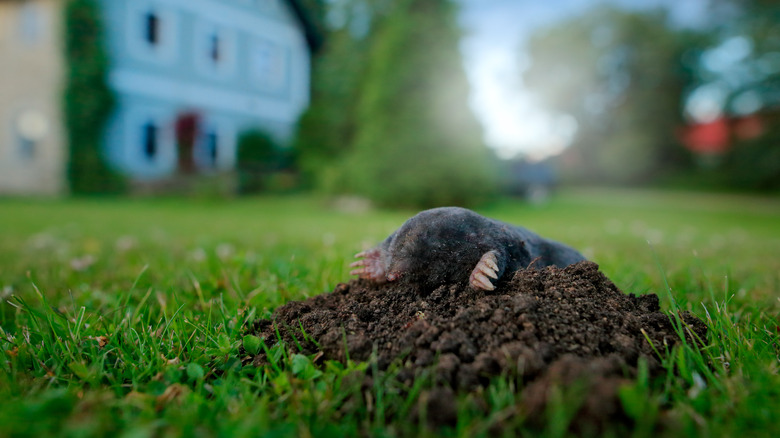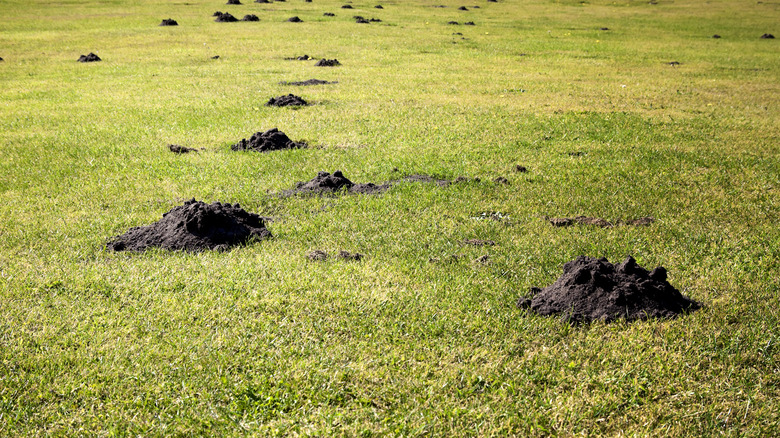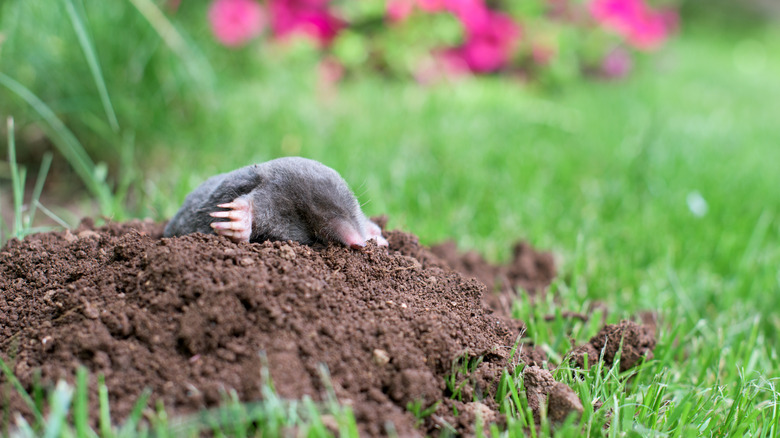Our Pest Control Expert Weighs In On If Planting Dill Will Deter Moles From Your Yard
If you see piles of dirt in your yard and garden, you probably have a problem with a certain type of unwanted critter that many homeowners know all too well. Moles can be destructive to your beautiful grass lawn and create large piles of dirt with deep tunnels and raised surface areas with shallow tunnels. Taking care of mole holes in your lawn can be quite an undertaking, requiring a lot of time to pack down the piles and flatten the tunnels. Perhaps the better option is to try to prevent these pests from entering your yard in the first place. You may have heard that planting dill can cause these critters to avoid the area because they dislike the aroma.
So, does planting dill actually keep moles away from your yard and garden? In an exclusive interview with House Digest, Dr. Chris Christensen said that planting dill does not work for one simple reason above all else: "Moles work underground and dill and its scent is above ground." Granted, Christensen is a franchise owner with Truly Nolen Pest Control and Critter Control, so it's hardly in his interest to tell us we can use plants to deter pests — if that works and everyone does it, then he's out of a job, right? But that doesn't necessarily make him wrong. "Dill does not even repel insects very much; in fact, one species of swallowtail butterfly caterpillars make a living on dill weed as caterpillars. It does not repel them."
Our expert discusses the best way to get rid of moles
If dill is not an effective means of keeping moles from damaging your yard and garden, what should you use? Chris Christensen said, "In the case of moles, you can use various mole traps, which are as effective as the person setting them, or use the Talpirid worms, which have a toxicant in them."
When you are deploying your own mole traps, understand that it can be challenging to have the success you want. You need to precisely follow the instructions on a trap that you purchase at the hardware store for maximum effectiveness, and you also have to set it in the proper location. On the other hand, if you're going to build a trap on your own as a DIY project, you need to follow the exact instructions to have the best chance at a successful outcome. Some traps present fairly obvious cruelty and safety concerns and even potential legal issues depending on what state they're being used in.
Ultimately, you may simply want to hire a professional extermination service. This team can study the situation at your property and determine the best way to attack the moles while also providing advice on how to keep them from returning. You also could try a trap-and-release product, or your local wildlife control organizations may be willing to try to humanely trap them for relocation.
Does anything work to repel moles from my yard?
A quick Google search will give you dozens of ways you can try to repel moles that are infesting your yard and garden. Although a few of these may work, they're unlikely to have any permanency to them, according to Chris Christensen.
"Repellents are not very effective ways to deal with pests," Christensen told House Digest. "Some sell a whirly gig device you can set in your lawn. Others sell sonic repellent devices, which you stick in the ground. If you buy either of these whiz bang products, I have a large bridge in Brooklyn, which you can purchase at our closeout sale price."
Rather than focusing on buying products to try to repel moles they're already infesting your yard and garden, you should take steps to keep them away. Moles feed on grubs that are in your yard. You can use insecticides or nematodes to eliminate the grubs, meaning moles will have little interest in visiting your yard. Another way to keep your yard unappealing to moles is by keeping the lawn as healthy as possible. Mow the grass on a regular basis. Additionally, avoid overwatering the lawn, which may draw insects like grubs, eventually attracting the moles to your yard habitat.


